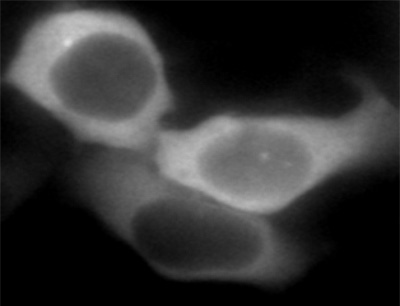Discovery of an evolutionary conserved function of protein kinase A

The pharmacological most important group of sensor molecules in the plasma membrane of living cells is the G-protein-coupled receptor family. More than 30 percent of prescribed drugs act directly or indirectly on this crucial family of cell surface proteins. Selective activation of the 800 members of this family results in activation of basically four G-proteins of the type ‚alpha‘ (α). Activation of G-protein-αs and G-protein-αi regulates the production of the second messenger cAMP. cAMP binds und activates the prototypical protein kinase A (PKA), which is the main cellular effector of cAMP fluxes.
Novel mechanismus for cellular adaption
The scientists Eduard Stefan and Verena Bachmann from the Institute of Biochemistry in Innsbruck (in collaboration with research teams from Canada and Germany) identified a novel and evolutionary conserved mechanism of signal transduction which involves PKA subunits, but surprisingly is independent of PKA kinase activity. For decades it is known that PKA regulatory subunits inhibit PKA catalytic subunits through binding. Once ligands activate Gαs-coupled receptors cAMP is produced, it diffuses into the cell and binds to PKA regulatory subunits. cAMP binding to the PKA regulatory subunit induces dissociation and activation of the PKA catalytic subunit which phosphorylates a plethora of substrates throughout the cell (= kinase activity).
The scientists from the Tyrol identified a novel function of PKA regulatory subunits: Following cAMP bindung to PKA regulatory subunits a complex with G-protein-αi is formed. This binary and dynamic interaction changes the sensitivity and increases the amplitude of Gαi-receptor mediated signal transmission in human cells. The exact molecular mechanism was found in baker’s yeast (S. cerevisiae) as well. These data indicate that this protein:protein interaction has been evolutionary conserved for at least 1,5 billion years. The formation of this cAMP initiated protein complex represents a novel mechanism how cells respond to changes of the environment. The authors show that hormone-regulated signaling cascades are interconnected and participate in processes of cellular adaption. This discovery has been published recently in the open-access online journal ‘Nature Communications’.